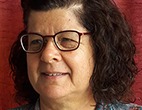Citation:
תקציר:
This chapter focuses on bridging the gap between policy and practice in Israeli schools, in the context of implementing a national innovative policy in the area of teaching higher-order thinking (HOT) across the curriculum. The chapter elaborates on capacity building of senior instructional leaders who were national subject superintendents (NSSs), responsible for the quality of teaching, learning and assessment in specific school subjects. The model of implementation had three main features: (a) deep and long-term (3 years long) capacity building and the formation of a community of learners; (b) a balanced blend of tightness (in terms of defining the overall goal—developing students’ HOT) and looseness (in terms of autonomy as to whether and how to engage in the change process); and (c) tailoring the change process to multiple, specific educational contexts. The workshop was part of a detailed plan of a top-down implementation process addressing changes in assessment, curriculum and learning materials and professional development. It made prominent contributions to the web of interactive changes that took place in learning and instruction of many school subjects, matching an ecological model of change. The analysis shows how a top-down implementation, together with a substantial degree of autonomy, can result in rich and diverse bottom-up initiatives. The NSS workshop thus demonstrated how long-term capacity building of a group of senior educational leaders can be used as a leverage for implementing an innovative instructional change on a large, national scale.

